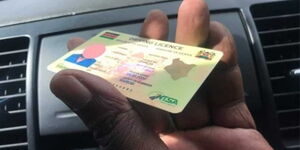Education Cabinet Secretary Ezekiel Machogu announced the results of the 2023 Kenya Certificate of Secondary Education (KCSE) paving the way for students to continue with the next phase of their lives.
From the results, only 201,133 candidates managed to score C+ and above qualifying to join university while the rest qualify to join TVETs for artisan courses.
As the intake is scheduled for August, students will have a lot of time on their hands. However, there are a few options to keep them occupied to improve their skills and prepare them for higher institutions of learning.
Kenyans.co.ke looks at several options for students waiting for university admission.
Short Courses
As candidates wait to join the university or TVETs, they can take up short courses from different institutions to improve their skills.
Some of these skills may be of help to the student later in life and also boost their chances of securing employment. Short courses often take at most three months allowing the student to learn and even practice the skills learned.
Some of the short courses to pursue include driving, computer studies, baking, foreign languages, and music classes. Additionally, students with interests in accounting can get a head start by pursuing Certified Public Accounts (CPA).
Bridging Courses
This allows a student to re-sit the subjects they did not perform well during the KCSE.
Through bridging, students get an opportunity to attain the minimum grade to improve their subjects and qualify for university.
Several institutions in the country offer bridging courses to students to allow them to pursue a career of their choice. The fee varies from each institution depending on the subjects the student wishes to bridge.
These institutions are recognised and registered by the Kenya National Examination Council (KNEC).
With bridging, a student can learn for six to 12 months and later proceed to university. Students who take this path should be aware that certificates from bridging may not be recognised by international institutions.
Start a Business
As the rate of unemployment soars in the country, more youth may lack jobs and end up frustrated.
With a few months before joining the university, students can start a small business. This can be in line with short courses taken. A home bakery can give the student a few coins and a feel of the job market.
Computer short courses may also come in handy with adapting to the changing technology and pursuing other career paths in the field by growing skills through online platforms such as YouTube.
Apprenticeship
This involves learning firsthand from a person in the field you aspire to venture into. Through apprenticeship, students get first-hand experience from experts to prepare them for the journey ahead.
If a friend or family member is in a career path you wish to pursue, show effort to learn and gain skills.












